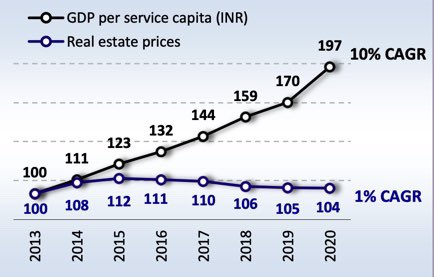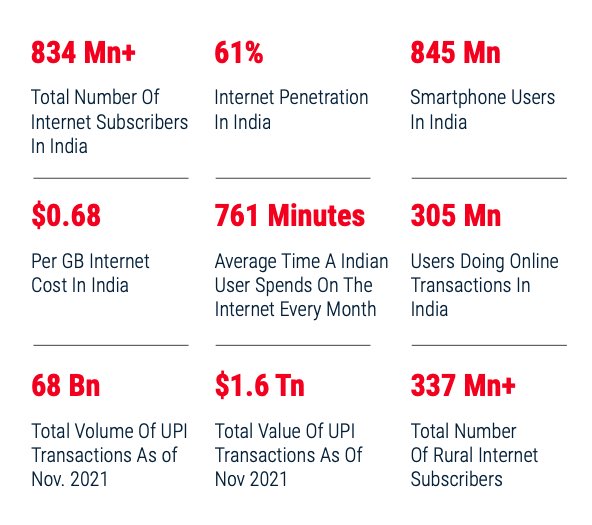
KPR Mill : Riding the perfect wave?
Here’s our analysis of the company: It’s growth prospects, well integrated business model and robust fundamentals!
Hit the Retweet button to help us educate fellow Investors!
A comprehensive thread below!
🧵🧵🧵👇🏻
Here’s our analysis of the company: It’s growth prospects, well integrated business model and robust fundamentals!
Hit the Retweet button to help us educate fellow Investors!
A comprehensive thread below!
🧵🧵🧵👇🏻

(1/24)
• KPR is a 100% integrated garment manufacturer. It has a presence across value chain from procuring quality cotton to processing fabric and finally to Garmenting and retail businesses.
• KPR is a 100% integrated garment manufacturer. It has a presence across value chain from procuring quality cotton to processing fabric and finally to Garmenting and retail businesses.
(2/24)
• It has one of the largest vertically integrated business in India which has several advantages:
1) It has a control over its quality
2) Better margin stability
3) Reduce Costing
4) Can timely deliver to clients
5) It can effectively withstand disruptive yarn cycle
• It has one of the largest vertically integrated business in India which has several advantages:
1) It has a control over its quality
2) Better margin stability
3) Reduce Costing
4) Can timely deliver to clients
5) It can effectively withstand disruptive yarn cycle
(3/24)
Why you should consider Investing in KPR?

• Strong export demand of its garment and yarn
• Its Ethanol segment is showing robust growth
• Synergies from vertically integrated operation
• Client stickiness
• Top Notch Operational Efficiency
• Capacity Expansion
Why you should consider Investing in KPR?

• Strong export demand of its garment and yarn
• Its Ethanol segment is showing robust growth
• Synergies from vertically integrated operation
• Client stickiness
• Top Notch Operational Efficiency
• Capacity Expansion
(4/24)
• Garment Segment, the Shining Armour of KPR : It’s share in revenue of KPR has increased drastically from 17% in FY14 to 37% in FY21.
• Its capacity is also up from 32Mn pieces in 2014 to 157Mn pieces in CY21, making it the largest knitted garment manufacturer in India
• Garment Segment, the Shining Armour of KPR : It’s share in revenue of KPR has increased drastically from 17% in FY14 to 37% in FY21.
• Its capacity is also up from 32Mn pieces in 2014 to 157Mn pieces in CY21, making it the largest knitted garment manufacturer in India

(5/24)
• It’s garment division has an order book of ₹750cr for next 2 quarters.
• Another good thing is that it’s client concentration remains low as no customer accounts for 10% of its garment export sales
• It’s garment division has an order book of ₹750cr for next 2 quarters.
• Another good thing is that it’s client concentration remains low as no customer accounts for 10% of its garment export sales
(6/24)
• Reason for strong export demand:
1) International customers are replacing the garments faster due to improvement in hygiene factors in the current pandemic
2) Company is adding new clients while meeting the existing clients demand on time
• Reason for strong export demand:
1) International customers are replacing the garments faster due to improvement in hygiene factors in the current pandemic
2) Company is adding new clients while meeting the existing clients demand on time
(7/24)
• Margins helped by healthy cotton yarn spreads:
Aggressive demand after lockdown made yarn prices shoot up more than cotton prices, thereby increasing cotton-yarn spreads. This gave KPR Mill robust margins in its yarn business.
Yarn margins rose from 15-18% to 25–30%
• Margins helped by healthy cotton yarn spreads:
Aggressive demand after lockdown made yarn prices shoot up more than cotton prices, thereby increasing cotton-yarn spreads. This gave KPR Mill robust margins in its yarn business.
Yarn margins rose from 15-18% to 25–30%

(8/24)
• The yarn & fabric division is the highest grossing segment by revenue for KPR Mill (~45%), with cotton yarn spreads aiding the margins.
•KPR upgraded its conventional yarn capacity to value-added yarn that fetches higher realisations, which should drive the margins.
• The yarn & fabric division is the highest grossing segment by revenue for KPR Mill (~45%), with cotton yarn spreads aiding the margins.
•KPR upgraded its conventional yarn capacity to value-added yarn that fetches higher realisations, which should drive the margins.
(9/24)
• As the garment segment has stable and high margins, it would lead to further rise in margins.
• Increase in the share of value-added yarn would benefit margins of the company.
• As the garment segment has stable and high margins, it would lead to further rise in margins.
• Increase in the share of value-added yarn would benefit margins of the company.

(10/24)
• China +1:
The US has banned imports made of Xinjiang cotton (Xinjiang region accounts for 20% of the global produce).
Thus, India becomes a substitute supplier (having the 2nd largest spindle capacity in the world).
And so the export for Indian yarn is rising
• China +1:
The US has banned imports made of Xinjiang cotton (Xinjiang region accounts for 20% of the global produce).
Thus, India becomes a substitute supplier (having the 2nd largest spindle capacity in the world).
And so the export for Indian yarn is rising
(11/24)
• Other Factors:
1) The textile ministry is talking with multiple developed nations over free trade agreements (FTA).
2) Pakistan’s GSP+ status could be revoked by EU (which grants free trade in most categories). So India could snatch it’s $2.8bn textile exports
• Other Factors:
1) The textile ministry is talking with multiple developed nations over free trade agreements (FTA).
2) Pakistan’s GSP+ status could be revoked by EU (which grants free trade in most categories). So India could snatch it’s $2.8bn textile exports
(12/24)
• Government Initiatives in Textile:
1) PLI scheme for Apparel/Garment
2) Setting up of Textile Parks
3) Export Incentive Scheme
• Government Initiatives in Textile:
1) PLI scheme for Apparel/Garment
2) Setting up of Textile Parks
3) Export Incentive Scheme
(13/24)
• Let’s talk about Ethanol:
Govt has set a target of achieving 20% ethanol blending in petroleum by 2025.
To participate in the government’s ethanol blending programme, KPR marked its venture into ethanol blending by commissioning a capacity of 90 KLPD in Q4FY20.
• Let’s talk about Ethanol:
Govt has set a target of achieving 20% ethanol blending in petroleum by 2025.
To participate in the government’s ethanol blending programme, KPR marked its venture into ethanol blending by commissioning a capacity of 90 KLPD in Q4FY20.
(14/24)
• KPR has a sugar mill of 10,000 TCD, ethanol capacity of 130 KLPD and Co-gen power of 40 MW.
• KPR is also setting up a new facility with sugar capacity of 10,000 TCD, ethanol capacity of 230 KLPD and Co-gen power of 47.5 MW.
• KPR has a sugar mill of 10,000 TCD, ethanol capacity of 130 KLPD and Co-gen power of 40 MW.
• KPR is also setting up a new facility with sugar capacity of 10,000 TCD, ethanol capacity of 230 KLPD and Co-gen power of 47.5 MW.
(15/24)
• The margins from this segment should rise with increasing contribution from ethanol.
• As you can see in the table below, KPR has higher EBITDA & ROCE due to high share of ethanol revenue(50%) compared with (~15%) revenue share by other sugar giants.
• The margins from this segment should rise with increasing contribution from ethanol.
• As you can see in the table below, KPR has higher EBITDA & ROCE due to high share of ethanol revenue(50%) compared with (~15%) revenue share by other sugar giants.

(16/24)
• Another important factor in cost efficiency of KPR is its Labour Management. Currently, the company’s employee cost is around 2% lower than the industry average. With a higher scale, employee cost as a % of sales is expected to further decline in the coming years.
• Another important factor in cost efficiency of KPR is its Labour Management. Currently, the company’s employee cost is around 2% lower than the industry average. With a higher scale, employee cost as a % of sales is expected to further decline in the coming years.

(17/24)
• Raw Material Management:
1) KPR maintains a raw material inventory cycle of 2-3 months, which is in line with its order book.
2) KPR hedges the entire receivables via forward contracts thereby keeping out any loss on account of currency volatility.
• Raw Material Management:
1) KPR maintains a raw material inventory cycle of 2-3 months, which is in line with its order book.
2) KPR hedges the entire receivables via forward contracts thereby keeping out any loss on account of currency volatility.
(18/24)
• KPR’s Retail Segment:
Its monthly revenue run-rate is ₹1.5–2cr. The company launched new advertisement campaigns to enhance the visibility of its brand.
• It aims to expand to 10,000 outlets by FY23E
• KPR’s Retail Segment:
Its monthly revenue run-rate is ₹1.5–2cr. The company launched new advertisement campaigns to enhance the visibility of its brand.
• It aims to expand to 10,000 outlets by FY23E
(19/24)
• Lets look at its Numbers:
1) Rise in EBITDA at a CAGR of 13% since FY11.
2) Margin expansion of 3.4% to 26.9%
3) Net sales increased at 12% CAGR since 2011
4) Average Realisation increased 2-6% over the period
5) Falling trend in D/E from 0.8x in FY16 to 0.3x now
• Lets look at its Numbers:
1) Rise in EBITDA at a CAGR of 13% since FY11.
2) Margin expansion of 3.4% to 26.9%
3) Net sales increased at 12% CAGR since 2011
4) Average Realisation increased 2-6% over the period
5) Falling trend in D/E from 0.8x in FY16 to 0.3x now
(20/24)
• Its key competitors:
1) Yarn and Fabric:
• Vardhman Textiles
• Ambika Cotton
• Nahar Spinning
2) Garments:
• Arvind
• Golaldas Exports
• SP Apparels
3) Ethanol:
• Balrampur Chini
• Renuka Sugar
• Triveni Engineering
• Dalmia Bharat Sugar
• Its key competitors:
1) Yarn and Fabric:
• Vardhman Textiles
• Ambika Cotton
• Nahar Spinning
2) Garments:
• Arvind
• Golaldas Exports
• SP Apparels
3) Ethanol:
• Balrampur Chini
• Renuka Sugar
• Triveni Engineering
• Dalmia Bharat Sugar
(21/24)
• Few Risks:
1) Fall in cotton yard spreads can impact margins
2) Rise in cotton prices
3) Execution delay by govt in Textile sector
4) Policy change in Ethanol blending by Govt
5) Supply Chain Disruption due to Covid-19
• Few Risks:
1) Fall in cotton yard spreads can impact margins
2) Rise in cotton prices
3) Execution delay by govt in Textile sector
4) Policy change in Ethanol blending by Govt
5) Supply Chain Disruption due to Covid-19
(22/24)
• A constant capacity expansion over the years, rock solid financial performance in a highly volatile sector is testament to KPR’s prudent management strategies and capital allocation methodologies
• KPR Mill can take advantage of unfolding opportunities in textile.
• A constant capacity expansion over the years, rock solid financial performance in a highly volatile sector is testament to KPR’s prudent management strategies and capital allocation methodologies
• KPR Mill can take advantage of unfolding opportunities in textile.
(23/24)
• It’s strong exports, rising cotton yarn spread and its play in ethanol segment all bodes well for the company in the future.
• Because of these factors, KPR mill is commanding premium valuations and can continue to do so in the years to come.
• Main shareholders👇🏻
• It’s strong exports, rising cotton yarn spread and its play in ethanol segment all bodes well for the company in the future.
• Because of these factors, KPR mill is commanding premium valuations and can continue to do so in the years to come.
• Main shareholders👇🏻

(24/24)
Kindly share for better reach and do give us a feedback!
@AnyBodyCanFly @Stockstudy8 @PAlearner @caniravkaria @Jai0409 @WealthEnrich @dcoolsam @itsTarH @equialpha
Happy Reading!🙂
Kindly share for better reach and do give us a feedback!
@AnyBodyCanFly @Stockstudy8 @PAlearner @caniravkaria @Jai0409 @WealthEnrich @dcoolsam @itsTarH @equialpha
Happy Reading!🙂
• • •
Missing some Tweet in this thread? You can try to
force a refresh














